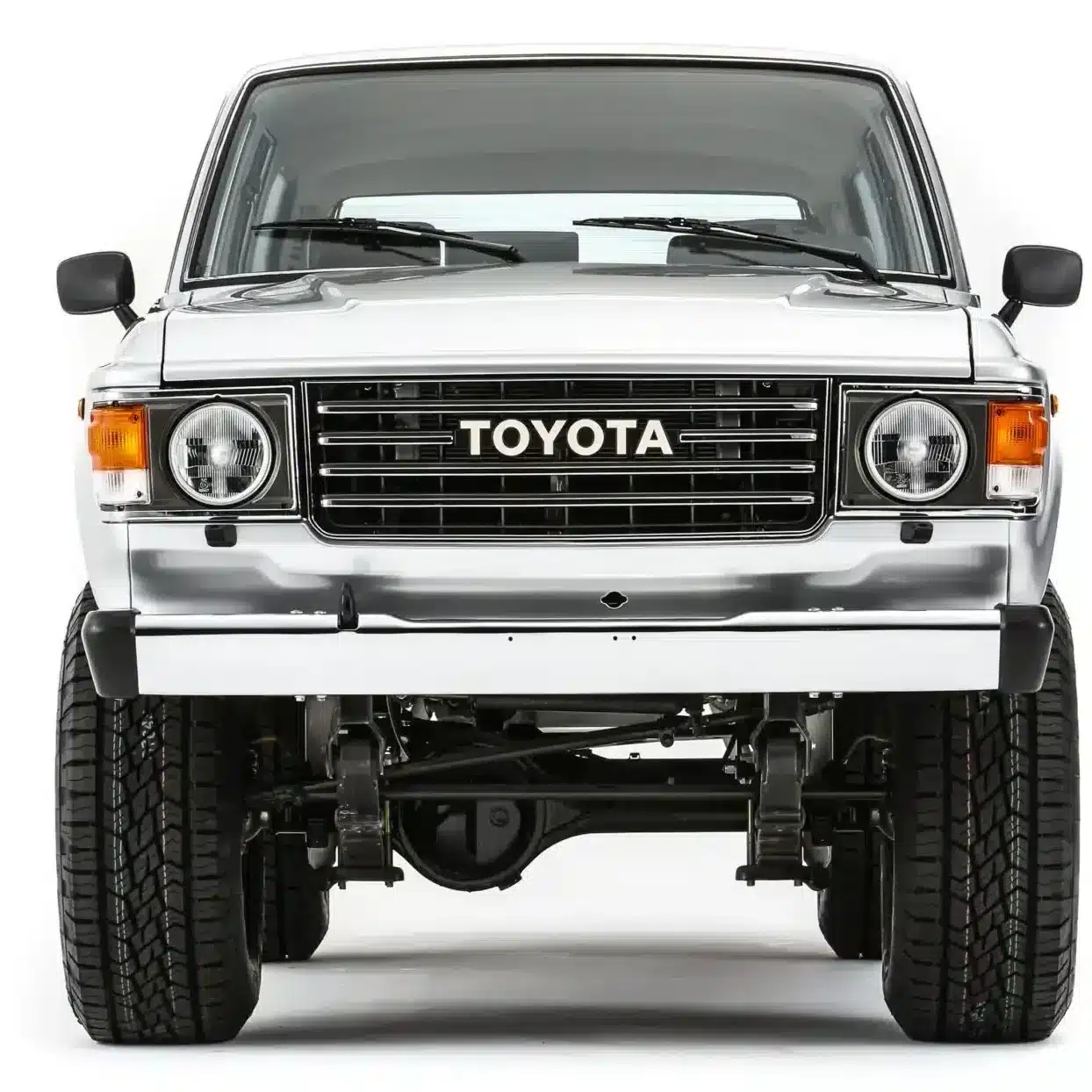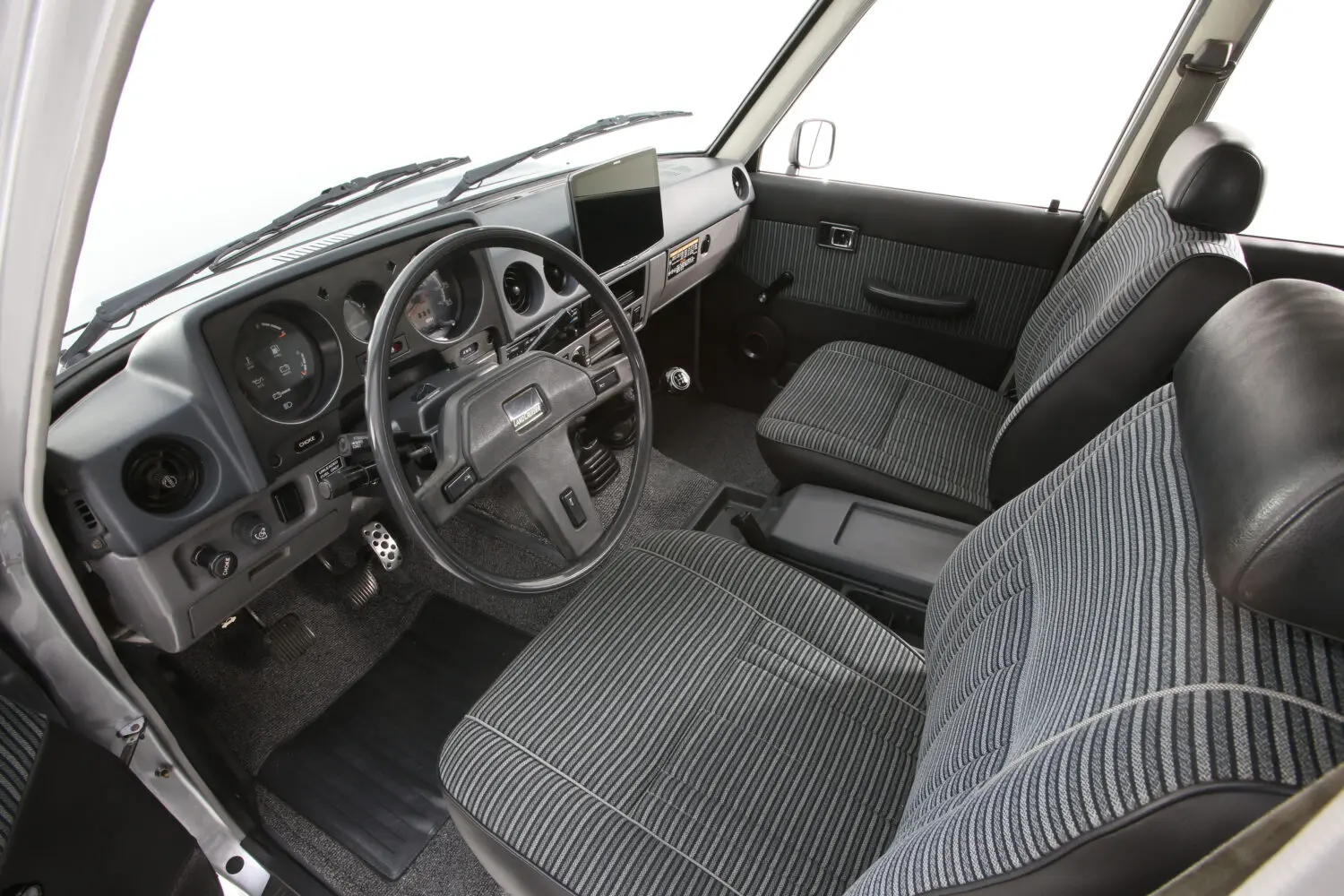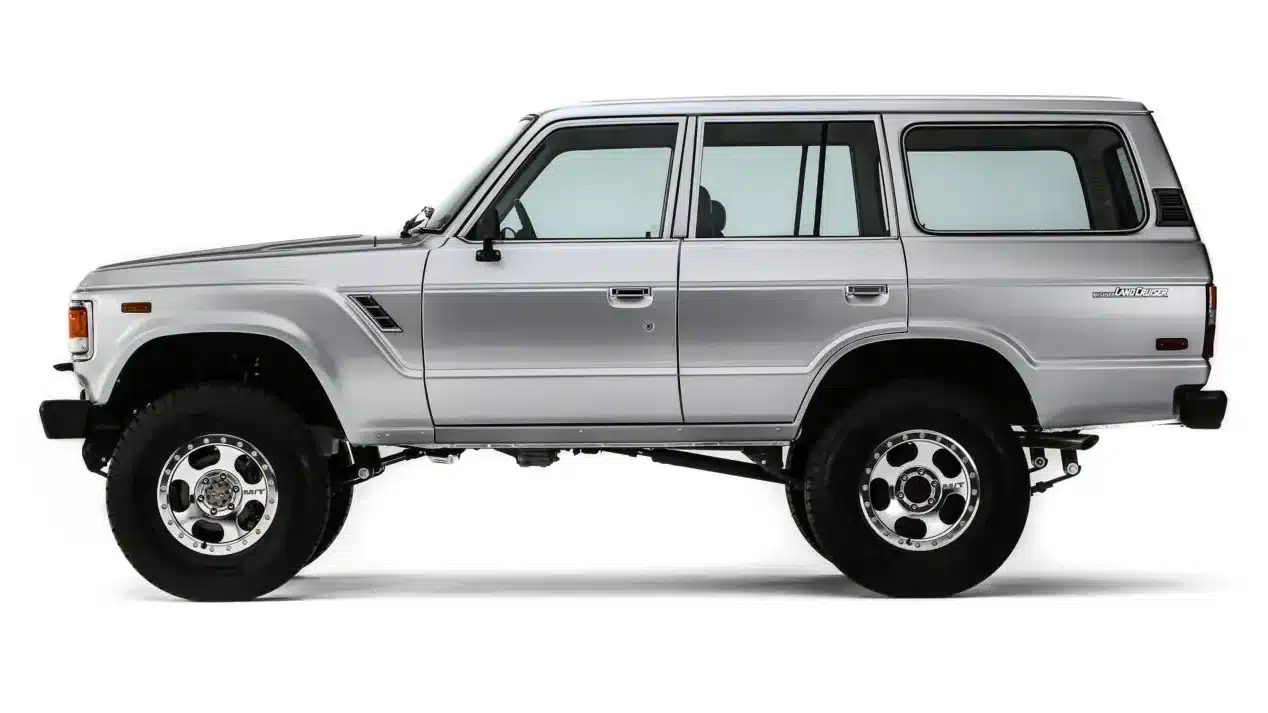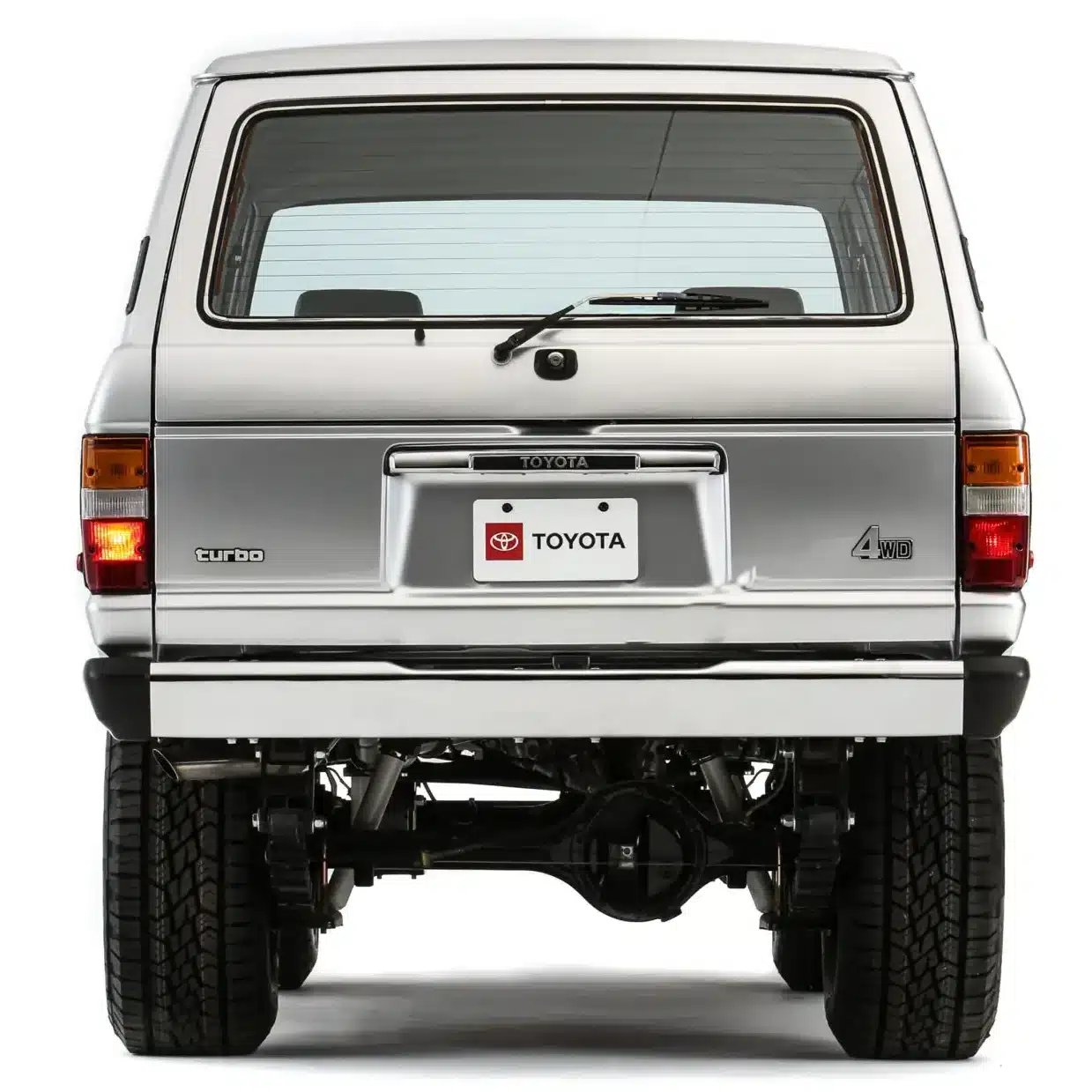Advertisement
Advertisement
Toyota has unveiled a 1985 FJ60 Land Cruiser at the 2025 SEMA Show. It packs the twin-turbo 3.4-litre V6 from the current Tundra. While the 80 Series tends to dominate Australian resto-mod attention, Toyota chose the earlier 60 Series wagon for this concept. This platform shares its DNA with the HJ60 diesel variants that many Australian enthusiasts will remember from the 1980s.

Toyota named it the Turbo Trail Cruiser. It produces 389 horsepower and 479 lb-ft of torque. That’s nearly triple the output of the original 2F inline-six. The factory engine made just 135hp and 200 lb-ft. This represents a substantial transformation in capability. You’d barely know it from looking at the vehicle.

Toyota Motorsports Garage engineered the i-FORCE 3.4-litre twin-turbo V6 to fit without cutting the firewall. They didn’t modify the chassis structure. Custom-machined adapter plates mate the modern engine to the FJ60’s original bell housing. This uses what appears to be a Marks 4WD bell-housing kit. New motor mounts position the engine correctly. A redesigned oil pan clears the chassis rails.
The factory H55F five-speed manual transmission remains in place. So do the original transfer case and front and rear live axles. This preservation-focused approach maintains the mechanical character of the original platform. It delivers substantially more power at the same time.
The cooling system received attention with an enlarged heat exchanger. Toyota fitted it to the original mounting points. A custom exhaust system handles the increased flow. A bespoke wiring harness manages the modern engine’s electronics.
Suspension modifications stay modest. The build features a 1.5-inch lift achieved through front shackle reversal. It runs 35-inch Continental TerraContact A/T tyres mounted on 17×9 Mickey Thompson Canyon Pro wheels. The paint reproduces Toyota’s original 1986 Silver 147. Period-correct graphics maintain the factory-original appearance that defines the build’s approach.

Inside, an Alpine Halo11 11-inch touchscreen provides wireless Apple CarPlay and Android Auto connectivity. It pairs with a full JBL audio system. Beyond that, the interior received restoration to original condition rather than modification. The seven-seat layout remains intact. This preserves the wagon’s family-friendly configuration.
This rig has been appropriately described as a hot-rod rather than a traditional resto-mod. The description fits the substantial power increase and modern conveniences. However, the approach respects the original platform. It doesn’t use it as merely a base for extensive modifications.

Marty Schwerter led the build. He described it as “a hot-rod approach with Toyota DNA – power, drivability, and reliability in a package that still feels true to the original Land Cruiser.” That philosophy comes through in the no-cutting, no-compromise engineering that characterises the project.
Mike Tripp is group vice president of Toyota Marketing for Toyota Motor North America. He positioned the concept within Toyota’s broader SEMA strategy. “It’s about preserving the character of a vehicle enthusiasts love while showing how seamlessly Toyota technology can elevate the driving experience.”
The reality for enthusiasts is that this remains a one-off concept. Toyota has made it clear the Turbo Trail Cruiser is “a special project prototype vehicle, modified with parts and/or accessories not available from Toyota.” The i-FORCE V6 isn’t offered as a crate engine. The custom components developed by Toyota Motorsports Garage won’t be commercialised.

Toyota produced the FJ60 Land Cruiser from 1980 to 1987. It represented Toyota’s first genuine attempt at a passenger-friendly Land Cruiser that didn’t sacrifice capability. The FJ60 petrol variant shown here wasn’t officially sold in Australia. However, the platform is familiar to Australian enthusiasts through the HJ60 diesel variants that were popular during this era.
Australian Land Cruiser history has been dominated by the working-focused 70 Series. The touring-capable 80 Series also dominates when it comes to modern builds and modifications. The 60 Series sits in an interesting middle ground. It’s mechanically simpler than later models. Yet it offers the wagon configuration and comfort that made it suitable for family touring.
The original powertrains have always been the platform’s limitation. The 2F petrol inline-six struggled with modern highway demands. This became particularly apparent when loaded with touring equipment and towing. Various engine conversions have addressed this over the years. Most enthusiasts have focused on later platforms for serious modification projects.
Toyota’s concept demonstrates that substantial power increases are achievable. You can do this without compromising the platform’s structural integrity or character. Whether that translates to commercial conversion opportunities remains to be seen. The engineering approach suggests it’s technically feasible with appropriate components and expertise.

The Turbo Trail Cruiser showcases what’s possible with modern power. Australian enthusiasts considering 60 Series builds face different priorities. Long-distance touring with heavy loads and caravans demands different characteristics. These differ from what suits American show vehicles. Australian touring requires fuel economy over remote distances, parts availability, and engineering certification pathways that vary by state.
The engineering philosophy behind Toyota’s concept translates well to the Australian modification scene. No firewall cutting, structural integrity preserved, quality integration over power alone – these principles work here. However, the specific powertrains and components that make sense for Australian touring would differ from Toyota’s SEMA build. Considerations include diesel availability, service intervals, and the realities of remote travel across a continent rather than weekend wheeling.
If you’re keen to check out what’s possible in a local build, All Four x 4 Spares recently documented a complete FJ62 restoration and engine conversion. They used components suited to Aussie requirements. This shows that local expertise and parts availability make these builds achievable. You need willingness to invest the time and resources.
Top 5 Custom LandCruiser 79s
Toyota reveals baby LandCruiser FJ, but Australia misses out